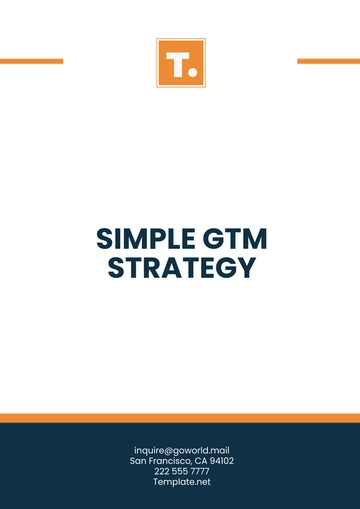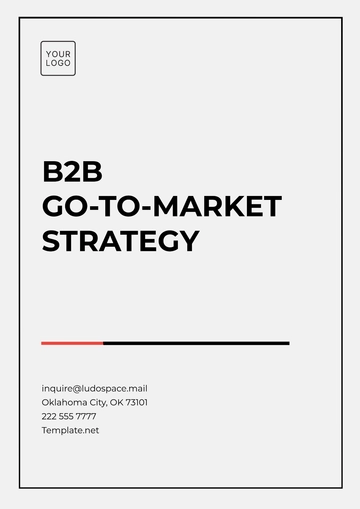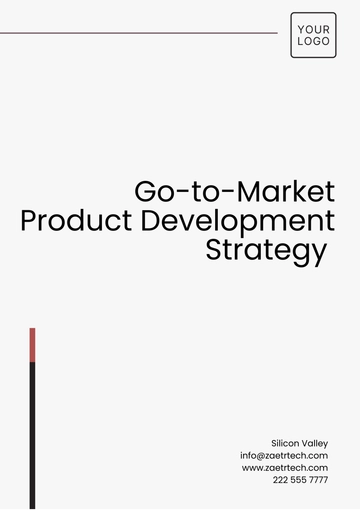Free Marketing Go to Market Strategy

I. Market Research & Analysis
Effective market research is essential for identifying customer needs and understanding competitors. This will guide product positioning and messaging.
Key Steps:
Analyze customer needs and pain points.
Perform SWOT analysis.
Identify market trends and competitors.
II. Product Positioning & Messaging
Positioning sets the product apart. Messaging must address customer pain points and showcase the product’s value.
Positioning Statement:
"For [Your Company Name], AutoFlow helps small businesses automate workflows to increase productivity."
Key Messages:
Affordable and scalable for small businesses.
Customizable for large enterprises.
Easy to use for individual consumers.
III. Sales & Distribution Strategy
We will employ direct sales for large prospects and online channels for small businesses and consumers, supplemented by partnerships.
Sales Channels:
Direct sales for large organizations.
Online sales for SMBs and individual consumers.
Partnerships to expand market reach.
IV. Marketing Campaigns & Promotion
Key campaigns will focus on product launch, seasonal offers, and referrals to drive demand.
Campaign Types:
Launch: Build awareness and generate leads.
Seasonal: Offer discounts during peak periods.
Referral: Encourage word-of-mouth marketing.
V. KPIs & Success Metrics
KPIs track the success of the GTM strategy. Key metrics include CAC, retention, and revenue growth.
KPIs:
Metric | Target Goal | Measurement Method |
|---|---|---|
CAC | $500 per customer | Monthly reports |
Retention Rate | 80% | Surveys, CRM data |
Revenue Growth | 15% per quarter | Financial reports |
VI. Execution Timeline & Budget
The strategy will be executed in three phases, with 40% of the budget allocated to the launch phase.
Timeline Overview:
Phase | Timeframe | Budget Allocation |
|---|---|---|
Phase 1 | Q1 2050 | 40% |
Phase 2 | Q2-Q3 2050 | 30% |
Phase 3 | Q4 2050 | 30% |
By focusing on strategic research, targeted messaging, and clear metrics, [Your Company Name] is positioned for a successful 2050 launch.
For more details, contact [Your Name] at [Your Email].
- 100% Customizable, free editor
- Access 1 Million+ Templates, photo’s & graphics
- Download or share as a template
- Click and replace photos, graphics, text, backgrounds
- Resize, crop, AI write & more
- Access advanced editor
This editable Printable Marketing Go-to-Market Strategy Template only available here on Template.net helps you analyze strategies for introducing your product or service to the market! With the advanced AI Editor Tool and customizable template, you can personalize the strategy to fit your marketing objectives, ensuring a smooth and effective launch!




























